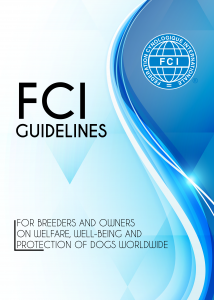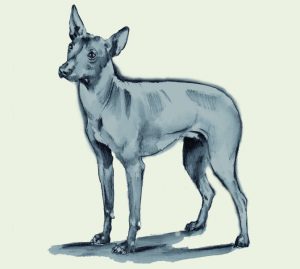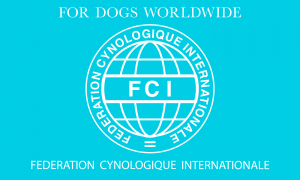When we review the FCI’s dog breed nomenclature, we find that its morphological classification includes the term “primitive”, along with three sections, classifying some of them by their morphology and others by their morphofunctionality:

As well as these breeds, we could continue adding many others which are not recognised, such as the Australian dingo, the Ethiopian wolf or canis simensis, the cuon alpinus or dhole, the American dingo or Carolina Dog, the Menorcan ca coniller, the Canarian warren hound, the Lampedusa or Tunisian warren hound, the French warren hound, the Galician warren hound and many more.
According to the Real Academia Española dictionary,
Primitive, (Primitivo, – va from the Latin primitīvus).
- adj. Something which is the first in its line or has no origin in anything else.
- adj. Pertaining or relating to the origins or early times of something.
Primitive, from the Greek (pɾimi’tiβo, -βa)
en.thefreedictionary.com/primitive
- of or belonging to the first or beginning; original.
- adj. earliest of its king, primitive, from primus first.
In turn, the Spanish word “origen” (origin) derives from the Latin term orīgo, referring to the start, beginning or emergence of, or the reason for something
http://definicion.de/origen/#ixzz3itoIK288
So we may ask ourselves whether we are aware of the origins of the breeds we refer to as “primitive”.
Disputing the term “primitive” is an exceedingly complicated business; we could carry out research and write whole texts about it. However, we shall refer to the FCI breed nomenclature, when it uses the term “primitive” to describe breeds of dogs which we know to be of some antiquity, for instance 2000 years or a little more, and which have remained intact until today, such as the spitzes in general, pre-Hispanic dogs, sheepdogs, the Egyptian Pharaoh hounds, etc., simply due to the fact that they have remained geographically isolated for certain periods which we call “ages”.
Universities, biologists, palaeontologists and researchers have worked very hard over the last few years to discover the lineage which led to some wolves becoming domestic dogs.
The author Javier Salas, a journalist who specialises in scientific, technological and environmental information, offers us a study published in Science on 14/11/2013 for MATERIA, which suggests a third way: i.e. Europe, long before the other possibilities. According to this project, based upon the fullest genetic study of many current canine species and fossils, dogs formed a relationship with hunter-gatherers long before humans began to cultivate the land.


Canine burial dating back 8,500 years found in Illinois (USA). MATERIA.
Modern dog breeds contain what we might call a kind of genetic remix, as a result of being cross-bred countless times, which makes it very difficult to trace the path of their evolution.
Up until the present, there had been various studies which attempted to draw their family tree by looking for genetic families based on analysing the DNA of hundreds of modern dog breeds.
The first of these, in 2002, concluded that the first dogs must have been domesticated somewhere in Asia – in what is now China – around 15,000 years ago.
“The dog was the first and only animal to be domesticated before agriculture began”.
Subsequently, another study was published in 2010 which included an analysis of 900 dogs and 400 wolves of various different breeds, in an attempt to discover the origins of this domestication.
This project claimed that the most likely place of origin was the Middle East, where there are archaeological references to domesticated dogs dating back 12,000 years.
”Dogs appear to share more genetic likeness with Middle Eastern grey wolves than with any other wolf population worldwide”, said the UCLA researcher Robert Wayne, who was responsible for this study, and also pointed out that 80% of dog breeds are modern breeds which have evolved over the last few hundred, although there are some which go back thousands of years.
So, China or the Middle East?
All these results did not close the door; contemporary DNA could offer a few clues, but was not the ultimate solution.
The researchers involved in the search for the first Toby set their sights on studying the DNA of extinct animals, in other words the genetic fossil records of the earliest dogs and extinct wolf breeds held the key to straightening out all this bountiful evolution, and an international group of researchers – including Wayne himself – have dedicated themselves to the task. The mix included not just wolves, modern dogs – from basenji to dingos – and coyotes, but also eighteen fossil samples of ancient canis, from the first dog type fossil, from Belgium and dating back 31,000 years, to ten wolf types from a thousand years ago.
Then, returning to the subject of the FCI’s dog breed nomenclature, where we find that, in accordance with what we know and understand at the present time, its morphological classification as “primitive dogs” is not the right term. Perhaps, for the moment, we should refer to them as “intermediate, pre-modern, pre-present-day dogs” etc., and try to find a way of classifying where breeds in the nomenclature which are a few millennia old come in the scheme of things, as distinct from recent breeds which have formed over the last few centuries, until we reach a genuine, conclusive idea of where dog breeds come from – unless someone has a better idea, of course!







